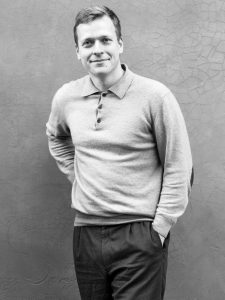Fridtjof Florian Dossin

Shortbio
- Since 2020 Research Associate, Bauhaus-Universität Weimar, Institute for European Urbanism, including: BMBF project Stadtwende (Urban Regeneration in GDR-transition) and BMBF project Vogtland Pioneers (Future Index 2025: Homeland und Building Culture)
- 2018-2020 Master’s degree in Historic Preservation / Heritage Sciences, Otto-Friedrich-Universität Bamberg, Thesis: New old town before the city? (Postmodern urban expansions after 1990 in East Germany)
- 2014-2018 Bachelor of Urban Studies, Bauhaus-Universität Weimar, Thesis: Modernity in the Countryside? (Rural settlement centres in the context of GDR industrialised agriculture)
- Since 2012, involved in the preservation and activation of derelict existing buildings, among others at: TRAFO Jena, LeerGut-Agenten IBA Thüringen, and Institut für Graue Energie e.V. (Institute for Grey Energy)
Contact
Bauhaus-Universität Weimar
Fakultät Architektur und Urbanistik
DFG-Graduiertenkolleg 2227 „Identität und Erbe“
D-99421 Weimar
Sitz: Prellerhaus | 3. OG | Raum 303
Geschwister-Scholl-Str. 6 | D-99423 Weimar
fridtjof.florian.dossin[at]uni-weimar.de
Industrial Re-use of Historical Production Sites: Underappreciated Aspects of Industrial Cultural Identity Constructions and Heritage Practices? (working title)
The research project is dedicated to new aspects of industrial heritage using the example of East Germany and focuses on the transformations of the post-reunification period as well as developments up to the present day. Contrary to the usual images of East German industrial culture characterised by the cult of ruins, repurposing and musealisation, the focus is on continuing industries and production sites with a continuity of industrial use beyond 1990. Despite massive de-industrialisation after 1990, large parts of eastern Germany are still characterised by industrialisation and industrial production and the secondary sector accounts for approx. 20-25% of total value added.
A closer look reveals production sites, especially in rural areas, that were used before 1990 and since the early 20th and even 19th century, and which are still characterised by active people and in many cases have historic building stock. These sites are often perceived only as inconvenient remnants of industrialisation, mostly due to job losses and environmental destruction, rather than receiving greater attention for their part in industrial culture. The question arises as to how the continued industrial use affects the treatment of the building fabric and the perception of industrial culture as well as the identity constructions and heritage practices associated with it. In the project, it is assumed that the production sites still in use today experience a multitude of further attributions of meaning due to their historical buildings, active actors and industrial utilisation concepts. For a more precise understanding, the preservation, use and appropriation practices of the active participants will be examined using case studies of selected industrial sites. What role do they play in the industrial(-cultural) landscapes of East Germany play from today’s perspective?